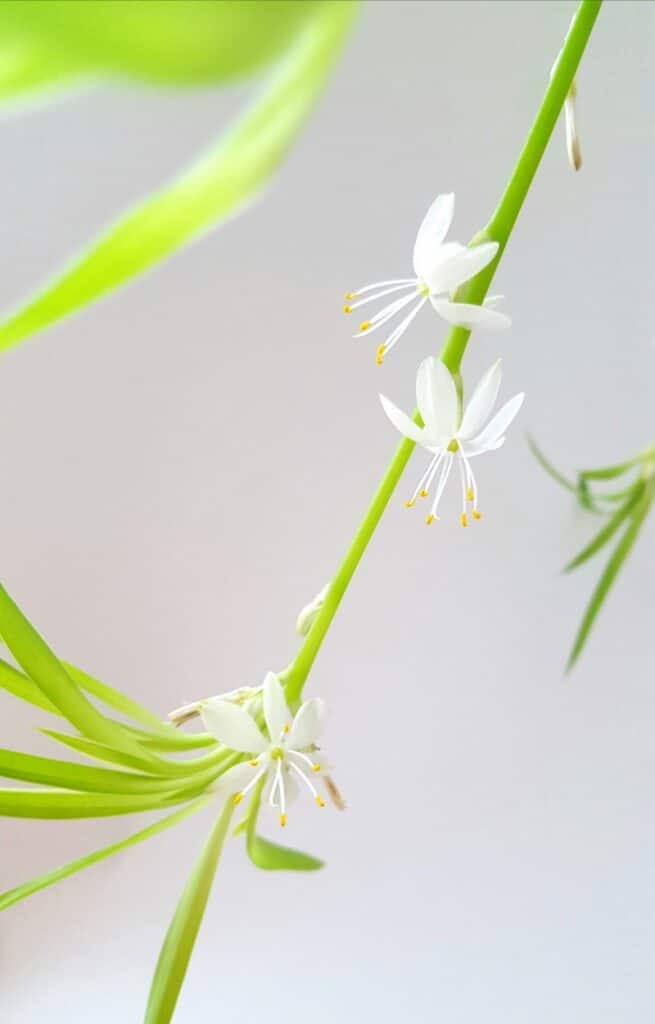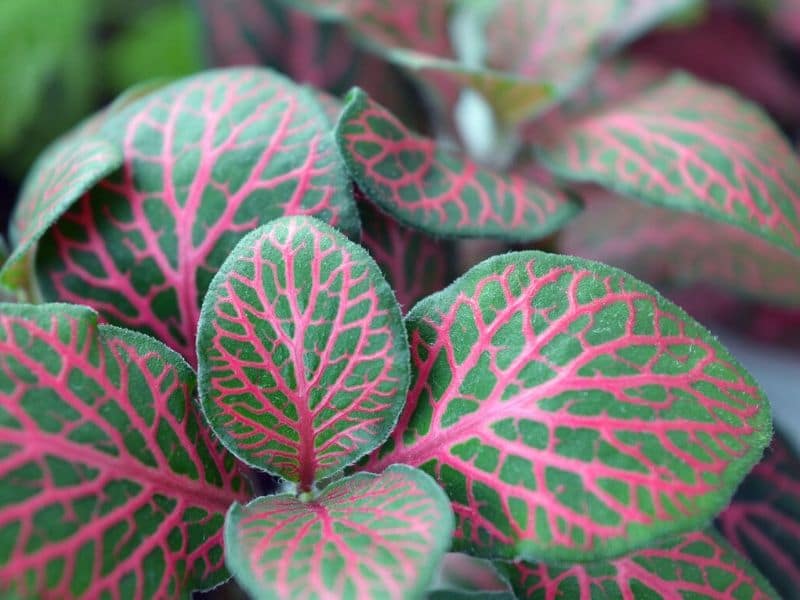Snake plants (Dracaena trifasciata), Sansevieria trifasciata or mother-in-law’s tongue are some of the hardiest houseplants you can possibly own. It is also one of the best species to place inside your home because it can remove up to 87% of harmful toxins from your interior spaces.
These indoor air purifier plants will brighten up your interior spaces with their deep green sword-shaped leaves.
Snake plants will look attractive if you grow them next to companion plants such as ZZ plants, rubber plants, aloe vera, variegated ivy, Pothos (Devil’s Ivy), nerve plants, mandevilla plants, or spider plants.
In this guide, we are going to take a peek at these other plants and discuss different ways to use them to create striking interior or exterior spaces.
What to Grow with Snake Plants
If you want to create beautiful spaces that are easy to maintain then you should select companion plants that have similar growing conditions as snake plants.
Mother-in-law’s tongues can tolerate some direct sunlight but they prefer bright indirect light and can even survive in deep shade positions.
These plants grow optimally if you place them in a free-draining soil mix but can also be grown in a soilless potting mixture if you are worried about over-watering.
When growing snake plants, you need to be looking out for root rot problems if they are kept moist. It is best to only water them when the soil is completely dry.
Let’s take a look at some other indoor plants that are just as drought-tolerant and easy to care for as the snake plant.
Spider Plants

Spider plants (Chlorophytum comosum) or ribbon plants are terrific species to include in your indoor collection because they will brighten up your space with their striped green and white leaves that look a little bit like spider tentacles.
As with snake plants, spider plants are easy to care for. They will flourish if you place them in indirect or moderate light conditions and they take well to any type of well-draining soil.
These plants require a little bit more water. In summer, they prefer moist soil but in winter the soil can be left to dry out completely before watering the plants again.
It is possible to grow a snake plant and a spider plant in the same container or garden bed. Most people do, however, prefer to place them in separate containers and group these containers together because it creates a more visually striking effect.
ZZ Plants

The ZZ plant (Zamioculcas) is also a great house plant to add to your collection. This tropical plant has glossy green leaves and it is also known to filter out airborne toxins like toluene and xylene from the air.
The air-purifying plant takes well to containers as long as it is placed in free-draining soil with lots of organic matter. These low-maintenance plants require lots of indirect light but only need to be watered every couple of weeks since they are very drought-tolerant.
You can place this beautiful texture-rich plant in a container and pair it with other potted plants in a living room or kitchen. Or you can grow it in a lightly shaded part of your garden alongside a row of snake plants.
Nerve Plant

Nerve plants (Fittonia albivenis) are also ideal house plants because they are easy to care for and offer air purification benefits since they can absorb harmful VOCs from your interior spaces. This companion plant is also ideal for decorating interior spaces because its veined deep green leaves are charming to look at.
Nerve plants will grow properly if you place them in bright light conditions and you should avoid direct sun positions or the leaves will become scorched. These attractive plants will grow well in any slightly acidic moist soil that drains well.
These snake plant companion plants prefer high humidity levels and should be misted or sprayed with a little bit of water if you grow them in dryer interior spaces.
You can also use this creeping plant as a ground cover for outdoor garden spaces because it will gradually spread all over your garden spaces on its own. The ground cover plant can also be used as a filler plant for mixed containers.
Variegated Ivy
Variegated ivy (Hedera helix) is an ideal vine plant to grow alongside snake plants because both plants have similar growing requirements and the vines will add lots of interest to your indoor potted area.
Variegated ivy will grow vigorously if you place it in an area where it will get plenty of bright indirect sunlight. If the light conditions are limited, the leaves of this vine species will turn dark green and its growth will be stunted. These snake plant companions can be kept moist but shouldn’t be left in waterlogged conditions.
These beautiful trailing plants will look charming if you place them in hanging baskets on your patio along with lots of other potted plants.
Aloe Vera
Aloe vera (Aloe vera) also has many beneficial properties and grows well in indoor spaces which makes it one of the best plants to combine with snake plants. You can use aloe vera to treat all sorts of skin conditions or medical issues or use it as decor for patios or interior spaces.
This medicinal plant will grow well if you place it in indirect sunlight but it can also develop well under artificial lights. These succulents require regular watering but shouldn’t be kept too wet or they will develop root rot.
This beautiful plant with its light green leaves will look striking if you grow it in a beautiful container and stack it where you place snake plants and other potted plants.
Rubber Fig
Rubber fig trees (Ficus Elastica) or rubber bushes can also be wonderful companion plants for snake plants if you need something large and showy to add to your collection of container species.
These beautiful ficus trees are known for their large glossy leaves and they are very easy to grow and care for.
Rubber bushes aren’t quite as drought tolerant as a snake plant and need to be kept moist but not too wet. The plant prefers bright light conditions and can even tolerate low light conditions.
The bushy plant can grow rather tall and should be placed in a large container. It is best not to grow this plant in your yard because it can grow into a large tree and it has a shallow root system that can cause damage to outdoor floor surfaces.
Mandevilla Plant
Mandevilla plants (Mandevilla) or rock trumpet is a good species to add to your garden if you are looking for a striking backdrop for snake plants. This vine plant can produce flowers in colors like pink, red, white, and yellow.
If you want these vines to produce lots of flowers then you should place them where they will receive lots of sunlight. The vines can also grow well in indirect light but won’t produce as many blooms and will look like a vine plant with lots of dark green leaves. These florals prefer regular watering but shouldn’t be saturated.
For optimal results, you should grow your mandevilla plant behind a row of snake plants and trail it up onto a fence. Position the snake plants underneath it where these shorter species will receive lots of shade.
These vines can also be grown in containers so you can move them indoors when it becomes cold outside. Mandevilla flowers are not too hardy and can easily die in the frost.
What NOT to Grow with Snake Plants
Since snake plants require so little care and maintenance, it is best not to combine them with high-maintenance plant species. You should avoid growing it with plants like roses, orchids, or Venus flytraps because the extra care these other plants require can end up killing your snake plants.
Snake plants also prefer shaded or indirect light positions which means it is best to keep it away from sun-dependent plant species like lavender, coreopsis, sunflowers, or coneflowers. In these dry and sunny positions, your snake plants can become unattractive.
Landscaping ideas for Snake Plants and Companions
The Sansevieria plant is quite flexible and can be used for lots of different applications in and around the house.
Let’s take a look at some of the best ways gardeners and homeowners use these plants and their companions to create showy spaces.
Mixed Hedges or Borders
Tall snake plant varieties can be grown in lanes to create a thick living fence or border. You can also grow a shorter plant species like spider plants or nerve plants in front of your lane of snake plants to conceal the base or to fill out your garden beds a little bit more.
Container Gardens
All of the plants we mentioned in this guide can grow very well in containers and are ideal for interior areas with lots of indirect light.
You can also place a mix of container species on a south or north-facing patio to brighten up these spaces. A mixture of different plants and containers can add lots of life and interest to these spaces.
Indoor Gardens
House plants are great for purifying the air inside your home. Air-purifying species like ZZ plants, snake plants, and nerve plants will help you create a much healthier living or work environment.
The plants will also double as decor for your kitchen, living room, bathroom, or even bedroom. Just remember to place your house plants close to the window where they will receive enough light or they can die.
Final Thoughts
There are many great snake plant companion plants that can look striking if you position them in containers alongside potted snake plants and some can even look striking in the same pot.
Snake plants can easily be grown with species like ZZ plants, rubber plants, aloe vera, variegated ivy, nerve plants, mandevilla plants, or spider plants.We hope that this guide gave you lots of creative ideas and helped you find some great species to grow in indoor spaces for indoor air pollution abatement or on a porch or patio.
See more: Indoor Plant Leaves Turning Yellow? Causes and Fixes







